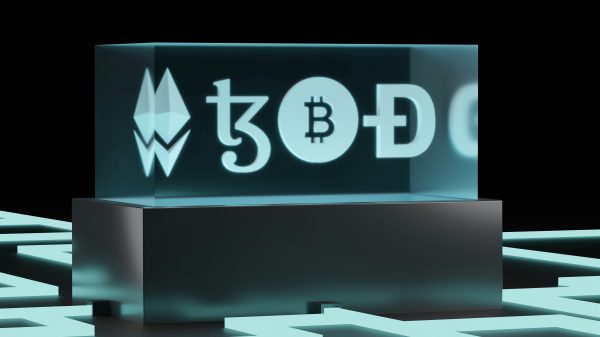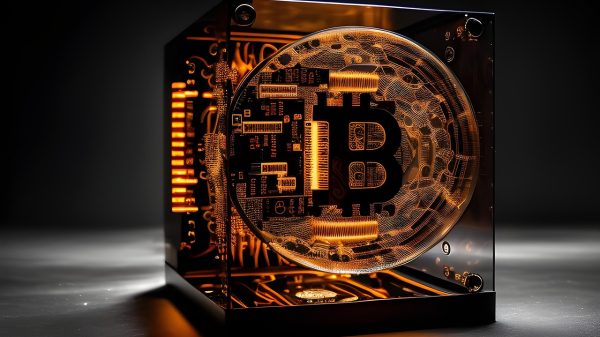Introduction: The Rise of Layer 2 Solutions in DeFi Trading
The world of cryptocurrency trading is evolving faster than ever. With Ethereum and other Layer 1 (L1) blockchains experiencing high gas fees and network congestion, traders and developers are increasingly turning to Layer 2 (L2) solutions to improve scalability, speed, and cost-efficiency.
Layer 2 networks operate on top of a base blockchain, retaining the security of L1 while enabling faster transactions and lower fees. For traders, this opens up access to markets and strategies that were previously too expensive or slow on L1. From arbitrage opportunities to participating in liquidity pools, L2 networks are reshaping how decentralized finance (DeFi) operates.
However, trading on Layer 2 comes with its own set of challenges, including liquidity fragmentation, bridge risks, and maximal extractable value (MEV) considerations. Understanding these dynamics is key for any trader looking to capitalize on L2 opportunities.
Layer 2 Architectures: Optimistic Rollups, zk-Rollups, and Sidechains
Layer 2 solutions come in different architectures, each with trade-offs:
-
Optimistic Rollups (Arbitrum, Optimism): Assume transactions are valid by default and post batches to L1. Fraud can be challenged during a designated window, which may delay withdrawals.
-
Zero-Knowledge (zk) Rollups (zkSync): Use cryptographic proofs to validate batches instantly, offering faster finality and lower operational overhead.
-
Sidechains / Validium: Process transactions off-chain while anchoring the final state to L1. Scalable but may carry additional security risks.
The architecture impacts execution speed, withdrawal latency, bridge costs, and arbitrage opportunities, making it essential for traders to choose networks strategically.
Why Traders Move to Layer 2: Lower Fees, Speed, and Access
The primary motivation for L2 trading is cost efficiency and speed:
-
Lower Fees: Transactions on L2 are often orders of magnitude cheaper than on Ethereum’s mainnet.
-
Faster Settlements: Rapid execution is critical for arbitrage, high-frequency trading, and responding to market movements.
-
New Market Access: Many emerging DeFi projects launch natively on L2 to avoid prohibitive L1 fees.
In Q1 2025, L2 solutions accounted for nearly half of Ethereum’s decentralized exchange (DEX) trading volume, exceeding $40 billion, highlighting their growing importance.
Challenges of Layer 2 Trading: Liquidity, MEV, and Bridge Risks
Trading on L2 introduces unique challenges:
-
Liquidity Fragmentation: Tokens may exist on multiple L2 networks with separate liquidity pools, causing wider spreads and higher slippage.
-
Maximal Extractable Value (MEV): Sequencers and validators can reorder, front-run, or sandwich transactions, affecting execution.
-
Bridge Risks: Moving tokens between L1 and L2, or across L2s, relies on smart-contract-based bridges that can be vulnerable to exploits. Optimistic rollups also enforce withdrawal challenge periods, sometimes up to a week.
Traders must monitor liquidity across rollups and use tools like Zeno Flow for integrated routing, reducing slippage and optimizing execution.
Comparing Major Layer 2 Networks
Here’s a snapshot of the leading L2 networks:
-
Arbitrum: Optimistic rollup with high total value locked (TVL) and deep liquidity.
-
Optimism: Another optimistic rollup with strong developer adoption.
-
zkSync: zk-rollup with fast finality and low latency, ideal for high-frequency trading.
-
Base and Mantle: EVM-compatible rollups with rapid adoption, particularly for new protocols.
Each network has trade-offs in liquidity, bridge efficiency, latency, and ecosystem support, so traders need to choose based on strategy and token availability.
Execution Tactics for L2 Traders
Traders gain clear advantages on L2: reduced fees, faster execution, access to newly launched tokens, and scalability for algorithmic strategies. Key execution tactics include:
-
Smart Order Routing: Split trades across multiple rollups to access best prices and reduce slippage.
-
Liquidity Aggregation: Use integrated platforms like Zeno Flow to route orders efficiently across networks.
-
Monitoring MEV and Latency: Critical for high-frequency or arbitrage strategies.
-
Position Sizing: Start small to test execution and slippage before scaling up.
Maintaining some capital on L1 or stable L2 networks ensures a secure exit buffer in case of congestion or bridge issues.
The Future of Layer 2 Trading
As rollups mature, we can expect:
-
Tighter Integration: Cross-rollup composability and liquidity pooling.
-
Automation: Algorithmic trading, dynamic routing, and sequencer transparency tools.
-
Emergence of Layer 3: Potential additional scalability and efficiency layers.
Success in L2 trading requires constant vigilance, technological proficiency, and strategic planning to navigate both opportunities and risks.
Getting Started: Tips for Newcomers
- Choose an L2-compatible wallet.
- Transfer small test amounts via bridges.
- Use aggregated DEXs or platforms like Zeno Flow.
- Monitor execution, slippage, and latency.
- Gradually scale as confidence grows.
Trading on Layer 2 is not a temporary workaround—it’s a structural evolution in DeFi markets.
FAQs: Key Considerations for Layer 2 Token Trading
1. What is a Layer 2 token?
A Layer 2 token is deployed on an L2 network, benefiting from faster throughput and lower fees compared to Layer 1.
2. How is L2 trading different from L1 trading?
L2 trading offers lower fees, faster execution, and access to emerging tokens, but comes with liquidity fragmentation and bridge risks.
3. What are the main risks of trading on Layer 2?
Risks include liquidity fragmentation, MEV, bridge vulnerabilities, and withdrawal delays.
4. What is MEV and why does it matter?
Maximal extractable value (MEV) refers to profits sequencers or validators can earn by reordering, front-running, or sandwiching transactions, impacting execution efficiency.
5. How do bridges work in Layer 2 trading?
Bridges lock assets on L1 and credit them on L2, enabling transfers but introducing fees, potential delays, and smart-contract risks.
6. Can I trade multiple L2 networks simultaneously?
Yes, using platforms like Zeno Flow, which aggregate liquidity and route orders across rollups.
7. What are optimistic vs. zk-rollups?
Optimistic rollups assume transactions are valid and allow challenge periods; zk-rollups use cryptographic proofs for instant validation and faster finality.
8. How do I manage liquidity fragmentation?
Monitor pools across networks, use aggregation tools, and plan trades to minimize slippage.
9. Is Layer 2 trading suitable for beginners?
Yes, but start with small amounts, learn bridge mechanics, and gradually scale as you gain confidence.
10. What is the future of Layer 2 trading?
Expect improved integration, automation, cross-rollup composability, and possibly Layer 3 networks for even greater scalability.
Conclusion: Harnessing the Potential of Layer 2 Trading
Layer 2 networks represent a structural evolution in decentralized markets. By understanding MEV, liquidity fragmentation, bridge risks, and execution tactics, traders can leverage L2 networks for faster, cost-efficient, and scalable trading strategies. Tools like Zeno Flow simplify multi-rollup execution, while careful planning and risk management ensure that traders remain competitive in this rapidly evolving landscape.















